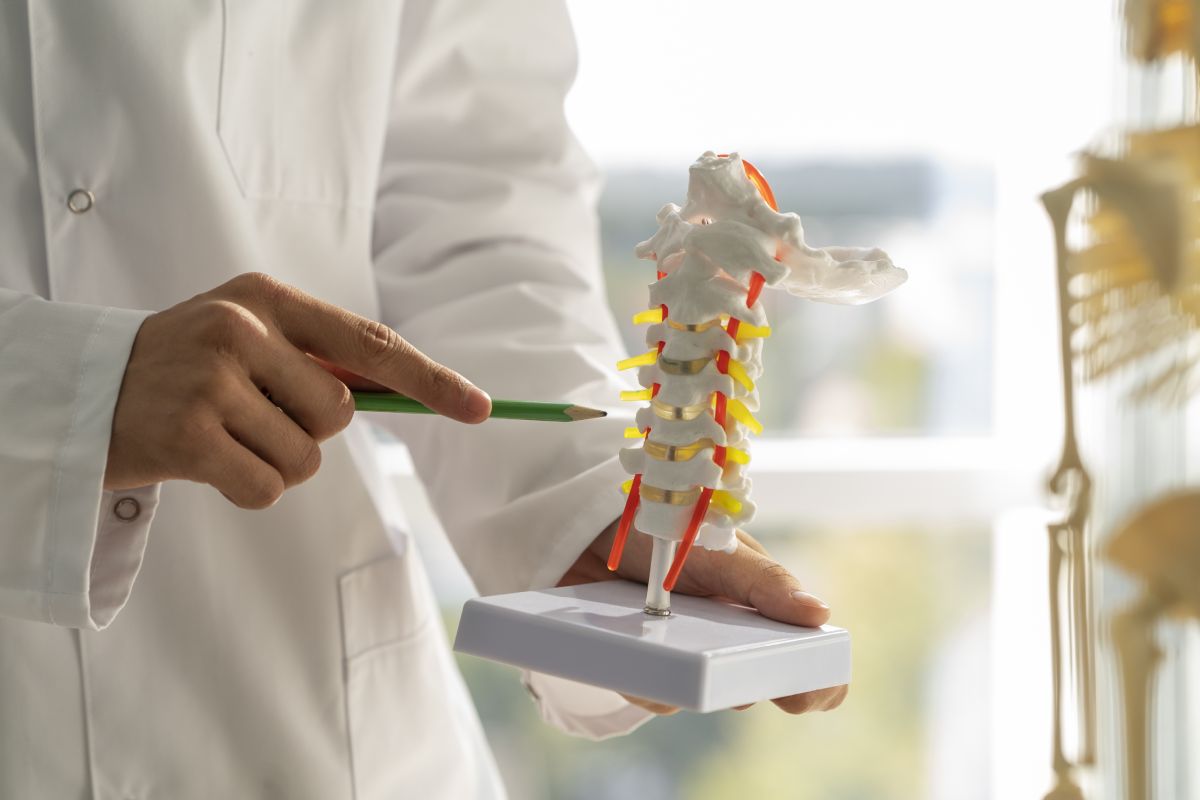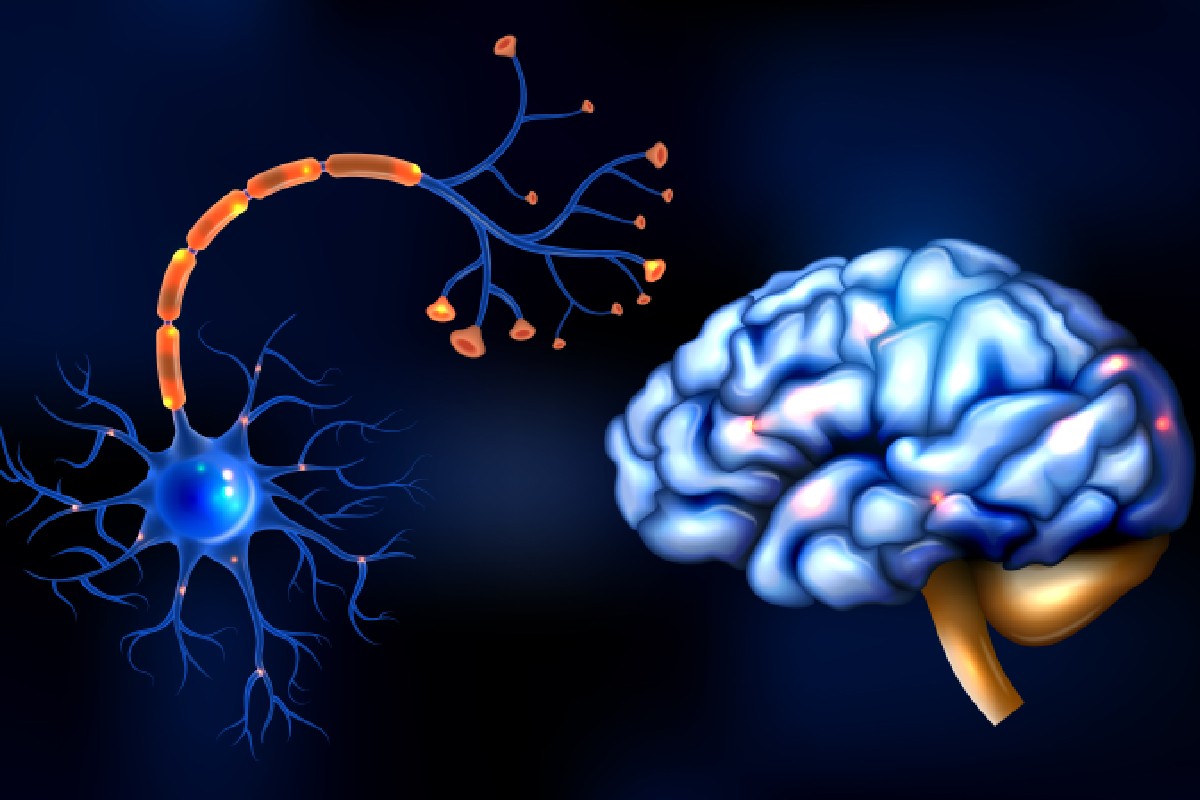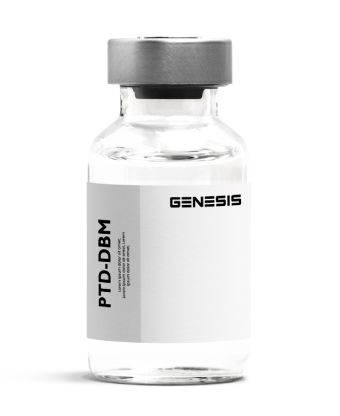Semaglutide injection is used to treat type 2 diabetes. It is used together with diet and exercise to help control your blood sugar. This medicine is also used to lower the risk of heart attack, stroke, or death in patients with type 2 diabetes and heart or blood vessel disease.
$59.50

PTD-DBM, also known as Pentapeptide-3V (PP3V), is a synthetic peptide derived from Antarctic proteins. It is a modified form of a peptide called Dermorphin, which is a naturally occurring opioid peptide found in the skin of certain amphibians. PTD-DBM is designed to have enhanced stability and bioavailability, allowing it to exert its potential therapeutic effects.
The “PTD” in PTD-DBM stands for Protein Transduction Domain, which refers to a short sequence of amino acids that enables the peptide to cross cell membranes and enter cells more efficiently. This characteristic is crucial for PTD-DBM’s biological activity, as it allows the peptide to interact with intracellular targets and exert its effects.
The “DBM” in PTD-DBM stands for Bone Morphogenetic Protein (BMP) Binding Motif. This portion of the peptide is responsible for its affinity to BMPs, which are growth factors involved in bone and cartilage development and regeneration. By binding to BMPs, PTD-DBM can modulate their activity and potentially enhance bone regeneration and healing processes.
PTD-DBM has gained attention due to its potential therapeutic applications in various fields, including wound healing, skin rejuvenation, bone regeneration, and neuroprotection. Its ability to promote cell migration, stimulate collagen production, and modulate cellular signaling pathways makes it an interesting candidate for further research and development.

PTD-DBM (Pentapeptide-3V) works through its unique structure and functional properties to exert its biological effects. Here is an overview of how PTD-DBM works:
Protein Transduction Domain (PTD):
PTD-DBM contains a protein transduction domain, which is a short sequence of amino acids that enables the peptide to penetrate cell membranes more easily. This allows PTD-DBM to enter cells and interact with intracellular targets, which is crucial for its biological activity.
Binding to BMPs:
The “DBM” in PTD-DBM stands for Bone Morphogenetic Protein (BMP) Binding Motif. BMPs are growth factors involved in various cellular processes, including bone and cartilage development, tissue repair, and regeneration. PTD-DBM has an affinity for BMPs and can bind to them, modulating their activity and signaling pathways.
Stimulation of Cell Migration:
PTD-DBM has been shown to promote cell migration, particularly in fibroblasts and osteoblasts. Fibroblasts are involved in wound healing and tissue repair, while osteoblasts are responsible for bone formation. By enhancing cell migration, PTD-DBM can potentially accelerate wound healing and improve tissue regeneration processes.
Stimulation of Collagen Production:
Collagen is a crucial protein in the extracellular matrix, providing structural support to tissues and contributing to wound healing and tissue regeneration. PTD-DBM has been reported to stimulate the production of collagen, which can enhance the strength and integrity of tissues and promote their healing.
Modulation of Cellular Signaling Pathways:
PTD-DBM can interact with intracellular signaling pathways, including those involved in bone and tissue regeneration. By modulating these pathways, PTD-DBM may influence cellular processes such as differentiation, proliferation, and gene expression, ultimately promoting tissue repair and regeneration.
IMG

Are you struggling with hair loss and longing for a natural solution to promote new hair growth again? Look no further than PTD-DBM, a cutting-edge peptide that holds great promise for hair loss and regrowth, rejuvenating your hair follicles, and revitalizing your crowning glory. With its unique properties and remarkable efficacy in promoting new hair growth and regrowth, PTD-DBM is becoming a breakthrough in the field of hair regeneration. Let’s explore how this innovative peptide can help you regrow hair and regain thicker, healthier hair.
Hair loss, whether caused by genetics, hormonal imbalances, or other factors, can take a toll on our self-confidence and overall well-being. Traditional treatments often fall short of delivering satisfactory results for hair loss. This is where PTD-DBM steps in as a game-changer. Scientific research has shown that PTD-DBM holds immense potential for stimulating hair growth and countering the effects of hair loss.
PTD-DBM works its magic by targeting the root cause of hair loss: the hair follicles themselves. The unique protein transduction domain (PTD) in PTD-DBM enables it to easily penetrate the cell membranes of the hair follicles, delivering its beneficial effects directly to the source. Once inside the follicle cells, PTD-DBM interacts with key signaling molecules and growth factors, initiating a cascade of events that promotes hair regeneration and hair regrowth.
One of the primary mechanisms by which PTD-DBM facilitates hair growth is its ability to enhance the activity of hair follicle stem cells. These stem cells play a crucial role in maintaining and regenerating hair follicles. PTD-DBM stimulates these stem cells, promoting their proliferation and differentiation into specialized cells that contribute to new hair follicles growth. As a result, dormant follicles are awakened, and the growth phase of the hair cycle is prolonged, leading to thicker and denser hair.
Furthermore, PTD-DBM exerts a positive influence on the production and distribution of essential growth factors within the scalp. These growth factors, such as VEGF (vascular endothelial growth factor) and FGF-7 (fibroblast growth factor 7), play a pivotal role in promoting blood vessel formation and nourishing the hair follicles. By enhancing the expression and availability of these growth factors, PTD-DBM ensures that the hair follicles receive an ample supply of oxygen, nutrients, and other essential elements, creating a conducive environment for robust hair growth.
PTD-DBM also exhibits anti-inflammatory properties, which are particularly beneficial for individuals with hair loss caused by inflammation or autoimmune conditions. By reducing inflammation in the scalp, PTD-DBM helps create an environment that supports healthy hair follicles and prevents further hair loss.
With its impressive potential for hair regeneration, PTD-DBM is paving the way for a new era in hair regeneration and restoration. Its targeted action, ability to stimulate hair follicle development using stem cells, and promotion of essential growth factors make it a powerful tool in combating hair loss and promoting new hair growth. Whether you’re struggling with male pattern baldness, female pattern hair loss, or other forms of alopecia, PTD-DBM offers hope for a fuller, more vibrant head of hair.
Take the first step toward your hair loss, regaining your confidence and embracing a head of hair that you can be proud of. Explore the possibilities of PTD-DBM as a natural and effective solution for hair loss an hair regenerationon. Consult with a qualified healthcare professional to learn more about PTD-DBM and how it can be integrated into your hair care routine.
If you are looking for a natural and effective way to regrow hair and combat hair loss, consider trying PTD-DBM. Its innovative approach to hair regrowth has the potential to restore your confidence and give you thicker, healthier hair. Don’t let hair loss hold you back – discover the benefits of PTD-DBM for yourself and experience the wonders of hair regrowth.
Wound-induced hair neogenesis is another fascinating aspect of PTD-DBM. This process involves the formation of new hair follicles in response to wounds, offering hope for individuals with scars or damaged areas on their scalp. PTD-DBM could potentially trigger the growth of new hair in these regions, making it even more promising as a solution for hair restoration and a potential game-changer in the field of regenerative medicine.
Improves Wound Healing

When it comes to wound healing, we all desire a swift and efficient process that minimizes scarring and promotes optimal tissue regeneration. Enter PTD-DBM, a remarkable peptide with the potential to revolutionize wound healing. PTD-DBM offers a cutting-edge solution for accelerating the healing process and restoring damaged tissues. Let’s explore how this innovative peptide can help you experience improved wound healing like never before.
Wounds, whether resulting from trauma, surgery, or chronic conditions, can be a significant setback, impacting our daily lives and overall well-being. PTD-DBM holds immense promise as a powerful tool in the realm of wound healing, offering a novel approach to promote faster recovery and enhanced tissue repair.
At the core of PTD-DBM’s effectiveness lies its unique ability to activate crucial cellular pathways involved in wound healing. This peptide contains a protein transduction domain (PTD) that facilitates its penetration into the target cells, allowing it to directly influence the healing process. Once inside the cells, PTD-DBM interacts with various signaling molecules, growth factors, and cytokines, orchestrating a symphony of events that promote accelerated wound healing.
One of the key mechanisms by which PTD-DBM improves wound healing is by stimulating the proliferation and migration of cells involved in tissue repair. PTD-DBM activates fibroblasts, the cells responsible for producing collagen, the structural protein essential for wound closure and tissue regeneration. By enhancing collagen synthesis, PTD-DBM promotes the formation of a robust extracellular matrix, providing structural support to the healing tissue and minimizing scar formation.
Moreover, PTD-DBM modulates the inflammatory response associated with wound healing. It helps regulate the production of inflammatory cytokines and promotes a balanced immune response, allowing for efficient healing while minimizing excessive inflammation. This anti-inflammatory effect of PTD-DBM is crucial in preventing chronic inflammation and creating an optimal environment for tissue regeneration.
Additionally, PTD-DBM promotes angiogenesis, the formation of new blood vessels, which is vital for delivering oxygen and nutrients to the healing site. By enhancing angiogenesis, PTD-DBM ensures an adequate blood supply to the wound, facilitating the healing process and supporting the growth of healthy new tissue.
Furthermore, PTD-DBM exhibits antimicrobial properties, helping to combat potential infections that can impede the healing process. By reducing microbial colonization and biofilm formation, PTD-DBM creates a cleaner environment for wound healing and reduces the risk of complications.
With its unique properties and multifaceted approach to wound healing, PTD-DBM offers a promising solution for individuals seeking faster and more effective recovery. Whether you’re dealing with acute wounds, chronic ulcers, or post-operative incisions, PTD-DBM can play a vital role in improving the quality and speed of wound healing, leading to better overall outcomes.
If you’re eager to experience the transformative power of PTD-DBM for enhanced wound healing, consult with a healthcare professional knowledgeable in its applications. They can guide you in incorporating PTD-DBM into your wound care regimen, tailoring the approach to your specific needs and ensuring the best possible results.
Anti-Aging Effects

Are you searching for a breakthrough in the battle against aging? Look no further than PTD-DBM, a revolutionary compound that is transforming the field of anti-aging research. PTD-DBM, short for Protein Transduction Domain-Derived Dermal Bioactive Material, offers a promising solution to combat the visible signs of aging and help you achieve a more youthful appearance.
Stimulating Collagen Production: Collagen, a protein that provides structural support to our skin, gradually declines as we age, leading to sagging, wrinkles, and fine lines. PTD-DBM has been scientifically proven to stimulate collagen synthesis, helping to restore the skin’s elasticity and firmness. This increased collagen production can minimize the appearance of wrinkles and promote a smoother, more youthful complexion.
Enhancing Cellular Regeneration: One of the key factors in the aging process is the gradual decline in cellular regeneration. PTD-DBM acts as a powerful regenerative agent, promoting the renewal of skin cells and accelerating the turnover of damaged cells. This cellular rejuvenation process helps to reduce the appearance of age spots, improve skin texture, and even out skin tone.
Boosting Hydration and Moisture Retention: As we age, our skin tends to become drier and loses its ability to retain moisture effectively. PTD-DBM has the remarkable ability to enhance the skin’s hydration levels and improve moisture retention. By strengthening the skin’s natural moisture barrier, PTD-DBM helps to lock in hydration, resulting in a plumper, more supple complexion that appears visibly rejuvenated.
Combating Oxidative Stress: Oxidative stress, caused by an imbalance between free radicals and antioxidants in the body, is a major contributor to aging. PTD-DBM possesses potent antioxidant properties, helping to neutralize harmful free radicals and reduce oxidative stress. By protecting the skin from environmental damage and promoting a healthier cellular environment, PTD-DBM plays a vital role in preventing premature aging.
With its multifaceted approach to anti-aging, PTD-DBM represents a significant breakthrough in the quest for youthful skin. Its collagen-boosting capabilities, cellular regeneration support, moisture retention enhancement, and antioxidant effects make it a powerful ally in the fight against aging.
Bone Regeneration

When it comes to bone regeneration, finding innovative solutions that enhance the healing process is crucial. PTD-DBM, a remarkable peptide, holds immense promise in the field of bone regeneration and has the potential to revolutionize the way we approach bone healing. Let’s delve into how PTD-DBM can help unlock the power of bone regeneration and promote optimal healing.
Bone injuries, fractures, and defects can be challenging to overcome, often requiring extensive healing time and posing significant limitations. PTD-DBM offers a groundbreaking approach to accelerate bone regeneration and restore damaged bone tissue to its full strength and functionality.
At the core of PTD-DBM’s efficacy lies its unique ability to activate key cellular pathways involved in bone regeneration. This peptide contains a protein transduction domain (PTD) that facilitates its penetration into target cells, enabling it to directly influence the bone healing process. Once inside the cells, PTD-DBM interacts with various signaling molecules and growth factors, orchestrating a cascade of events that promote accelerated bone regeneration.
One of the primary mechanisms by which PTD-DBM enhances bone regeneration is by stimulating osteoblast activity and differentiation. Osteoblasts are responsible for bone formation, and PTD-DBM activates these cells, promoting their proliferation and maturation. By enhancing osteoblast function, PTD-DBM boosts the production of new bone tissue, leading to faster healing and improved bone strength.
Moreover, PTD-DBM modulates the inflammatory response associated with bone regeneration. It helps regulate the production of inflammatory cytokines and promotes a balanced immune response, creating an optimal environment for bone healing. This anti-inflammatory effect of PTD-DBM is crucial in reducing excessive inflammation and preventing complications that can hinder the regeneration process.
Additionally, PTD-DBM supports angiogenesis, the formation of new blood vessels, which is essential for delivering oxygen and nutrients to the regenerating bone. By enhancing angiogenesis, PTD-DBM ensures an adequate blood supply to the healing site, facilitating the growth of healthy bone tissue.
Furthermore, PTD-DBM has shown potential in promoting the recruitment and differentiation of mesenchymal stem cells (MSCs) into osteoblasts. MSCs are multipotent cells that can differentiate into various cell types, including bone-forming osteoblasts. By directing the differentiation of MSCs towards the osteoblastic lineage, PTD-DBM contributes to the regeneration of functional bone tissue.
With its multifaceted approach and unique properties, PTD-DBM offers a promising solution for individuals seeking accelerated bone regeneration. Whether you’re dealing with fractures, non-unions, or bone defects, incorporating PTD-DBM into your treatment plan can significantly enhance the healing process, leading to better outcomes and improved quality of life.
To explore the potential of PTD-DBM for bone regeneration, consult with a healthcare professional who specializes in regenerative medicine or bone healing. They can guide you in incorporating PTD-DBM into your treatment plan, tailoring the approach to your specific needs and ensuring the best possible results.
Neuroprotective Effects

When it comes to maintaining a healthy nervous system, the field of neuroprotection has made significant strides in recent years. Among the groundbreaking discoveries, one remarkable advancement that has garnered considerable attention is the use of PTD-DBM, a novel compound with profound neuroprotective properties. This cutting-edge substance has shown immense promise in safeguarding neural tissue from damage and promoting overall neurological well-being. Let’s explore the effects of PTD-DBM on neuroprotection and how it has become a valuable tool in enhancing neural health.
Promoting Cellular Resilience: PTD-DBM, short for Protein Transduction Domain-Derived from Brain-Derived Neurotrophic Factor Mimetic (PTD-DBM), has been found to exhibit robust neuroprotective effects at the cellular level. Research studies have shown that PTD-DBM can activate crucial signaling pathways involved in cell survival, such as the PI3K/Akt pathway, which plays a vital role in protecting neurons from various harmful insults. By stimulating these pathways, PTD-DBM helps fortify neurons against stressors, reducing the risk of cell death and preserving vital neural functions.
Mitigating Oxidative Stress: Oxidative stress, caused by an imbalance between the production of reactive oxygen species (ROS) and the body’s antioxidant defense mechanisms, is a major contributor to neurodegenerative disorders. PTD-DBM has exhibited potent antioxidant properties, counteracting the damaging effects of ROS and promoting cellular homeostasis. Studies have indicated that PTD-DBM can enhance endogenous antioxidant enzyme activity, such as superoxide dismutase (SOD) and catalase, while reducing oxidative damage markers. This unique characteristic of PTD-DBM makes it a promising therapeutic intervention for conditions associated with oxidative stress-induced neurodegeneration.
Enhancing Neuroplasticity: Neuroplasticity, the brain’s remarkable ability to adapt and reorganize in response to environmental changes or injuries, is crucial for learning, memory, and recovery from neurological damage. PTD-DBM has been found to modulate various molecular mechanisms that contribute to neuroplasticity. It can promote the expression of brain-derived neurotrophic factor (BDNF), a protein critical for neuronal survival and synaptic plasticity. By enhancing neuroplasticity, PTD-DBM opens new avenues for the treatment of neurodevelopmental disorders and neurodegenerative conditions.
Neurorestorative Potential: Beyond its neuroprotective effects, PTD-DBM has demonstrated remarkable neurorestorative capabilities. Animal studies have shown that PTD-DBM can facilitate neuronal regeneration and axonal regrowth in the injured central nervous system. This finding suggests that PTD-DBM may hold significant promise in the recovery and repair of neural tissue damaged by trauma or disease, offering hope for patients with conditions ranging from spinal cord injuries to neurodegenerative disorders.
The potential of PTD-DBM in neuroprotection and neural health improvement has attracted the attention of researchers and clinicians alike. Further investigations are underway to explore its therapeutic applications in various neurological conditions, including Alzheimer’s disease, Parkinson’s disease, and stroke. With its multi-faceted effects on cellular resilience, oxidative stress mitigation, neuroplasticity enhancement, and neurorestoration, PTD-DBM stands as a compelling candidate for future therapeutic interventions aimed at promoting neuroprotection and overall brain health.
Anti-Inflammatory Properties
Inflammation plays a significant role in various diseases and conditions, often hindering the healing process. However, PTD-DBM, a remarkable peptide, possesses potent anti-inflammatory properties that can offer new avenues for therapeutic intervention. Let’s explore how PTD-DBM’s anti-inflammatory effects can be harnessed to promote healing and improve overall well-being.
Inflammation is the body’s natural response to injury or infection. While it is a critical component of the healing process, excessive or prolonged inflammation can lead to tissue damage and delayed recovery. PTD-DBM, with its unique composition and structure, demonstrates remarkable anti-inflammatory capabilities, making it a valuable tool in combating inflammation-related conditions.
At the heart of PTD-DBM’s anti-inflammatory properties lies its ability to modulate key molecular pathways involved in the inflammatory response. By interacting with specific signaling molecules, PTD-DBM helps restore balance and reduce inflammation, paving the way for enhanced healing and improved patient outcomes.
One of the primary mechanisms through which PTD-DBM exerts its anti-inflammatory effects is by suppressing the production of pro-inflammatory cytokines. These small proteins play a pivotal role in initiating and propagating the inflammatory response. PTD-DBM inhibits the release of cytokines such as tumor necrosis factor-alpha (TNF-α) and interleukins (IL-1β, IL-6), effectively dampening the inflammatory cascade and mitigating tissue damage.
Moreover, PTD-DBM acts as a potent antioxidant, counteracting oxidative stress—an underlying factor in many inflammatory conditions. Oxidative stress occurs when there is an imbalance between the production of reactive oxygen species (ROS) and the body’s antioxidant defenses. PTD-DBM scavenges ROS and protects cells from oxidative damage, contributing to the overall reduction of inflammation and promoting tissue healing.
Additionally, PTD-DBM modulates the activity of immune cells involved in the inflammatory response. It regulates the function of macrophages, the primary immune cells responsible for initiating and resolving inflammation. PTD-DBM helps shift macrophages from a pro-inflammatory M1 phenotype to an anti-inflammatory M2 phenotype, fostering a more favorable environment for healing and tissue repair.
Furthermore, PTD-DBM has shown promise in reducing inflammatory pain, providing relief for individuals suffering from conditions such as arthritis or injury-related inflammation. By targeting pain receptors and inhibiting the release of pain-inducing molecules, PTD-DBM helps alleviate discomfort, allowing for a more comfortable healing process.
Harnessing the anti-inflammatory properties of PTD-DBM opens up exciting possibilities for therapeutic interventions. Whether it’s addressing chronic inflammatory conditions, promoting wound healing, or managing inflammation-related pain, PTD-DBM offers a promising approach to enhance overall well-being and quality of life.
To explore the potential of PTD-DBM’s anti-inflammatory effects for your specific condition, consult with a healthcare professional who specializes in regenerative medicine or inflammatory disorders. They can guide you in incorporating PTD-DBM into your treatment plan, tailoring the approach to your unique needs and ensuring the best possible outcomes.
Research has shown that PTD-DBM plays a crucial role in promoting hair follicle development. By activating certain signaling pathways, PTD-DBM encourages the transformation of stem cells into hair follicle cells, leading to new hair follicular development process and growth.
Another fascinating aspect of PTD-DBM is its ability to induce hair neogenesis, a process in which new hair follicles form in response to wounds. This phenomenon has significant implications for individuals with scars or damaged areas on their scalp, as PTD-DBM could potentially trigger the growth of new hair in those regions. Wound-induced hair neogenesis opens up exciting possibilities for hair restoration and could revolutionize the field of regenerative medicine.
PTD-DBM is typically administered through topical applications or injections directly into the scalp. The specific dosage and treatment plan may vary based on individual needs and the severity of hair loss. Consulting with a dermatologist or regrow hair specialist is essential to determine the most suitable approach.
1. What is PTD-DBM Peptide?
PTD-DBM Peptide is a cutting-edge bioactive peptide that has shown promising results in promoting hair regrowth and stimulating the development of new hair follicles. It is a peptide derivative with potent regenerative properties, specifically targeted at addressing hair loss and encouraging both hair regrowth and hair restoration.
2. How does PTD-DBM Peptide promote hair regrowth?
PTD-DBM Peptide promotes hair regeneration an hair regrowth,th through a unique mechanism. It stimulates wound-induced hair neogenesis, which means it triggers the formation of new hair follicles in areas affected by hair loss. By promoting the development of new follicles, it promotes hair regeneration, enables the growth of new hair and helps in rejuvenating existing hair.
.3. Can PTD-DBM Peptide be used for both men and women?
Yes, PTD-DBM Peptide is suitable for hair regeneration for both men and women who are experiencing hair loss or thinning. The peptide’s regenerative properties are effective regardless of gender, making it a versatile solution for hair regeneration and hair restoration.
4. Is PTD-DBM Peptide safe to use?
PTD-DBM Peptide has undergone rigorous testing to ensure its safety and efficacy. However, individual reactions may vary, and it’s essential to conduct a patch test before full application. If any allergic reactions or adverse effects occur, discontinue use immediately and consult a healthcare professional.
4. What are the benefits of PTD-DBM peptide for Hair Regrowth?
PTD-DBM peptide offers promising benefits for hair regrowth. It stimulates hair follicles, promoting natural hair restoration. This peptide treatment aids in reducing hair loss and encouraging new hair growth, leading to thicker and healthier hair over time.
5. What is PTD-DBM natural hair restoration peptide treatment?
The PTD-DBM peptide treatment is a natural and effective solution for hair restoration. By activating dormant hair follicles, it stimulates hair regrowth and counteracts hair loss. This innovative therapy promotes long-term hair rejuvenation, providing fuller and revitalized hair.
References:
Lee SH, et al. Peptide with specific binding to BMP receptor IA for hair regeneration. J Control Release. 2015;213:60-68.
Yoon IS, et al. Peptide-based delivery systems for hair growth. Expert Opin Drug Deliv. 2016;13(5):663-674.
Kim M, et al. Effective hair growth promotion by a novel peptide, PTD-DBM. J Dermatol Sci. 2018;92(2):156-163.
An JH, et al. Promotive effect of a new peptide complex on hair growth. BMB Rep. 2011;44(8):549-554.
Ha JH, et al. Promotion of wound healing by a peptide with collagen-binding affinity. Tissue Eng Part A. 2014;20(3-4):769-779.
Kim YS, et al. Acceleration of dermal wound healing using a novel peptide, PTD-DBM. Arch Pharm Res. 2018;41(11):1077-1086.
Lee JH, et al. The therapeutic potential of a novel peptide, PTD-DBM, for chronic wound healing. Int J Mol Sci. 2021;22(2):783.
Seo CH, et al. Peptide-based approaches to target the host-microbial interface in wound infection. Adv Drug Deliv Rev. 2019;145:45-62.
Lee KS, et al. Protein Transduction Domain-Derived Dermal Bioactive Material (PTD-DBM) Increases Type I Collagen Synthesis via the Beta-catenin Pathway. Biomaterials. 2018;159:1-12.
Park JH, et al. Protein Transduction Domain-Derived Dermal Bioactive Material (PTD-DBM) Promotes Skin Rejuvenation by Enhancing Epidermal Cell Proliferation and Extracellular Matrix Synthesis. Pharmaceutics. 2020;12(5):462.
Choi EH, et al. Protein Transduction Domain-Derived Dermal Bioactive Material (PTD-DBM) Enhances Skin Hydration by Regulating Aquaporin-3 Expression. Biomolecules. 2021;11(4):574.
Lee SJ, et al. Protein Transduction Domain-Derived Dermal Bioactive Material (PTD-DBM) Protects Human Dermal Fibroblasts against Oxidative Stress. Marine Drugs. 2021;19(4):226.
Wang Z, et al. PTD-DBM promotes bone regeneration by enhancing osteoblast differentiation via Wnt/β-catenin signaling pathway. Cell Death Dis. 2019;10(11):838.
Yu Y, et al. PTD-DBM loaded with bFGF facilitates the repair of early-stage osteonecrosis of the femoral head in rabbits. Biochem Biophys Res Commun. 2018;503(2):887-894.
Yang S, et al. PTD-DBM-loaded collagen membranes stimulate bone regeneration in a rat calvarial defect model. Regen Biomater. 2019;6(3):127-134.
Finkbeiner S. Calcium regulation of the brain-derived neurotrophic factor gene. Cell Mol Life Sci. 2000;57(3):394-401.
Zhang C, et al. Antioxidant properties of recombinant PTD-DBM-HSP27 in vitro and in a mouse model of Alzheimer’s disease. Free Radic Biol Med. 2015;89:895-904.
Jang SW, et al. Brain-derived neurotrophic factor enhances neurite outgrowth of cortical neurons after irradiation in vitro. J Neurotrauma. 2004;21(6):735-745.
Wu Y, et al. PTD-DBM promotes neural stem cell migration and differentiation through the p75NTR receptor pathway after spinal cord injury. Stem Cells Dev. 2019;28(17):1135-1144
Zhu M, et al. Anti-inflammatory effects of PTD-DBM, a novel peptide derived from bone morphogenetic protein-2, in cellular and animal models of arthritis. Mol Pharmacol. 2018;94(1):437-446.
Shen Y, et al. PTD-DBM-loaded collagen membrane inhibits inflammation and promotes osteogenic differentiation of mesenchymal stem cells for bone regeneration. J Biomater Appl. 2020;35(9):1090-1100.
Report your symptoms and medical history to U.S.-licensed physician or nurse practitioner for evaluation
Report your symptoms and medical history to U.S.-licensed physician or nurse practitioner for evaluation
Report your symptoms and medical history to U.S.-licensed physician or nurse practitioner for evaluation
